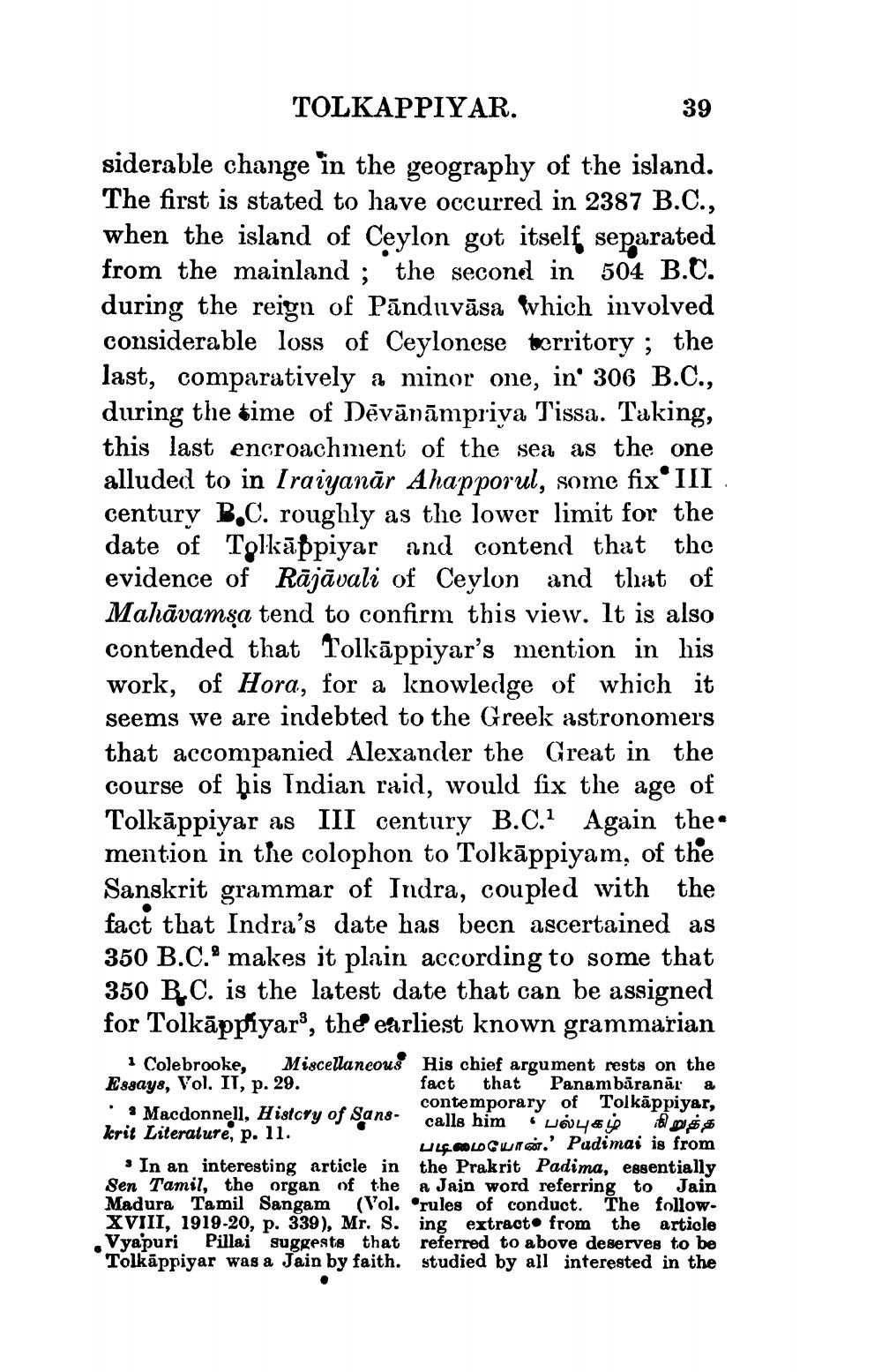________________
TOLKAPPIYAR.
39
siderable change in the geography of the island. The first is stated to have occurred in 2387 B.C., when the island of Ceylon got itself separated from the mainland ; the second in 504 B.C. during the reign of Pānduvāsa which involved considerable loss of Ceylonese territory ; the last, comparatively a minor one, in 306 B.C., during the time of Dēvānāmpriya Tissa. Taking, this last encroachment of the sea as the one alluded to in Iraiyanār Ahapporul, some fix® III century B.C. roughly as the lower limit for the date of Tolkāppiyar and contend that the evidence of Rājāvali of Ceylon and that of Mahāvamsa tend to confirm this view. It is also contended that Tolkāppiyar's mention in his work, of Hora, for a knowledge of which it seems we are indebted to the Greek astronomers that accompanied Alexander the Great in the course of his Indian raid, would fix the age of Tolkāppiyar as III century B.C.1 Again the mention in the colophon to Tolkāppiyam, of the Sanskrit grammar of Indra, coupled with the fact that Indra's date has been ascertained as 350 B.C. makes it plain according to some that 350 B.C. is the latest date that can be assigned for Tolkāppiyars, the earliest known grammarian
i Colebrooke, Miscellaneous His chief argument rests on the Essays, Vol. II, p. 29.
fact that Panambāranar a . . Macdonnell, History of Sans
contemporary of Tolkāppiyar,
calls him ' பல்புகழ் நிறுத்த krit Literature, p. 11.
படிமையோன்.'' Padimai is from • In an interesting article in the Prakrit Padima, essentially Sen Tamil, the organ of the a Jain word referring to Jain Madura Tamil Sangam (Vol. 'rules of conduct. The followXVIII, 1919-20, p. 339), Mr. S. ing extract from the article Vyapuri Pillai suggests that referred to above deserves to be Tolkāppiyar was a Jain by faith. studied by all interested in the




